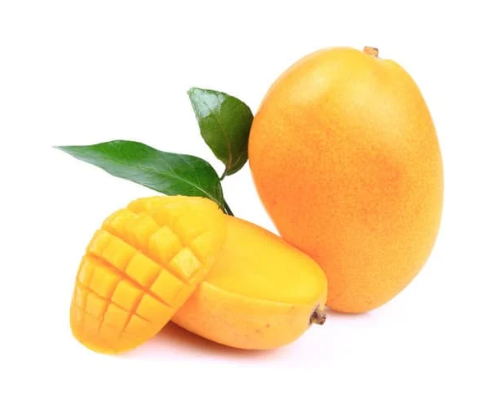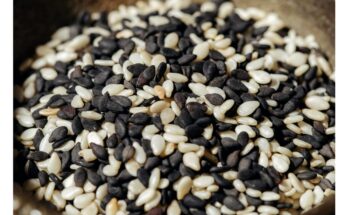Mango is one of the most loved fruits in the world. Grown in tropical regions, it’s known as the “king of fruits” because of its sweet taste, juicy texture, and amazing health benefits.
This fleshy fruit has a thin skin and a central stone that houses its seed. Mangoes vary in size, shape, and color, ranging from green to shades of yellow and red. Inside, the fruit encloses a hard endocarp, which also varies in size depending on the variety.
The mango tree is large, evergreen, and deeply rooted, with dark green glossy leaves. Beyond being a popular fruit, mangoes hold cultural and ceremonial significance in many traditions—used in decorative rituals and sacred fires. While some mangoes may have a fibrous texture and a turpentine-like taste, the best ones are juicy, sweet, low in fiber, and packed with a unique tangy-sweet flavor that’s hard to resist.
Mango at Every Stage
Mangoes are consumed at all stages of ripeness. Green or unripe mangoes are high in starch, which gradually transforms into sugars like glucose, sucrose, and maltose as the fruit ripens. By the time mangoes reach full ripeness, the starch is almost completely converted into sugar. Green mangoes are also rich in pectin—a type of fiber that decreases as the seed develops. The sourness of unripe mangoes comes from organic acids like oxalic, citric, malic, and succinic acids.
Nutritional Value of Mango (per 100g)
- Energy: 74 kcal
- Moisture: 81.0 g
- Protein: 0.6 g
- Fat: 0.4 g
- Minerals: 0.4 g
- Fiber: 0.7 g
- Carbohydrates: 16.9 g
- Calcium: 14 mg
- Phosphorus: 16 mg
- Iron: 1.3 mg
- Magnesium: 270 mg
- Potassium: 205 mg
- Vitamin C: 16.0 mg
- Carotene (Vitamin A precursor): 2743 mcg
- Thiamine (B1): 0.08 mg
- Riboflavin (B2): 0.09 mg
- Niacin (B3): 0.9 mg
Health Benefits of Mango
Ripe mangoes are nourishing and rich in natural sugars, primarily glucose and fructose. They also contain small amounts of tartaric and malic acids, which support the body’s alkaline balance. Unripe mangoes, on the other hand, are loaded with vitamin C—often more than ripe ones—and are excellent for boosting immunity.
Mangoes, in general, are packed with vitamin B-complex (especially niacin), and their nutrient content varies by variety, stage of ripeness, and environmental factors.
Medicinal Uses of Mango
Mangoes have long been used in traditional medicine for their healing properties:
- Unripe Mango: Sour, astringent, and a powerful antiscorbutic (prevents scurvy). The skin acts as a tonic and stimulant. It’s effective in treating gastrointestinal issues like indigestion, morning sickness, diarrhea, dysentery, and constipation. Green mangoes also replenish sodium and iron lost through sweating in the summer heat.
- Ripe Mango: Acts as a natural diuretic, mild laxative, and body tonic. It supports liver health, improves complexion, and stimulates appetite. It is beneficial for people with weight loss, liver conditions, and general weakness.
Mangoes and Eye Health
Mangoes are an excellent source of carotene (pro-vitamin A), which helps prevent night blindness and other vision problems. Regular consumption supports eye health by preventing dryness, itching, and inflammation, and may even help avoid long-term vision damage.
Boosting Immunity and Skin Health
Vitamin A also promotes healthy epithelium, the tissue that covers the body’s surfaces, acting as a barrier to infection. Eating mangoes during the season can help prevent common ailments like colds and other infections by strengthening this protective layer.
Mango for Weight Gain (with Milk)
A traditional way to gain weight healthily involves eating ripe mangoes followed by a glass of milk—three times a day. Mangoes are rich in sugars but low in protein, while milk is protein-rich but low in sugar. Together, they form a nutritionally balanced, wholesome meal option for those looking to add healthy weight.
Mango Pickles & Summer Remedies
Mango pickles are a staple in Indian households, offering both flavor and preservation. A cooling summer drink made from roasted green mangoes mixed with sugar and water—commonly known as aam panna—helps combat heat stroke and fatigue. Eating raw mango with salt also helps maintain electrolyte balance during hot weather.
Mangoes aren’t just a treat for your taste buds—they’re a powerhouse of nutrients and medicinal properties. Whether you enjoy them ripe, raw, as a juice, pickle, or dessert, they truly live up to their title: the King of Fruits.




